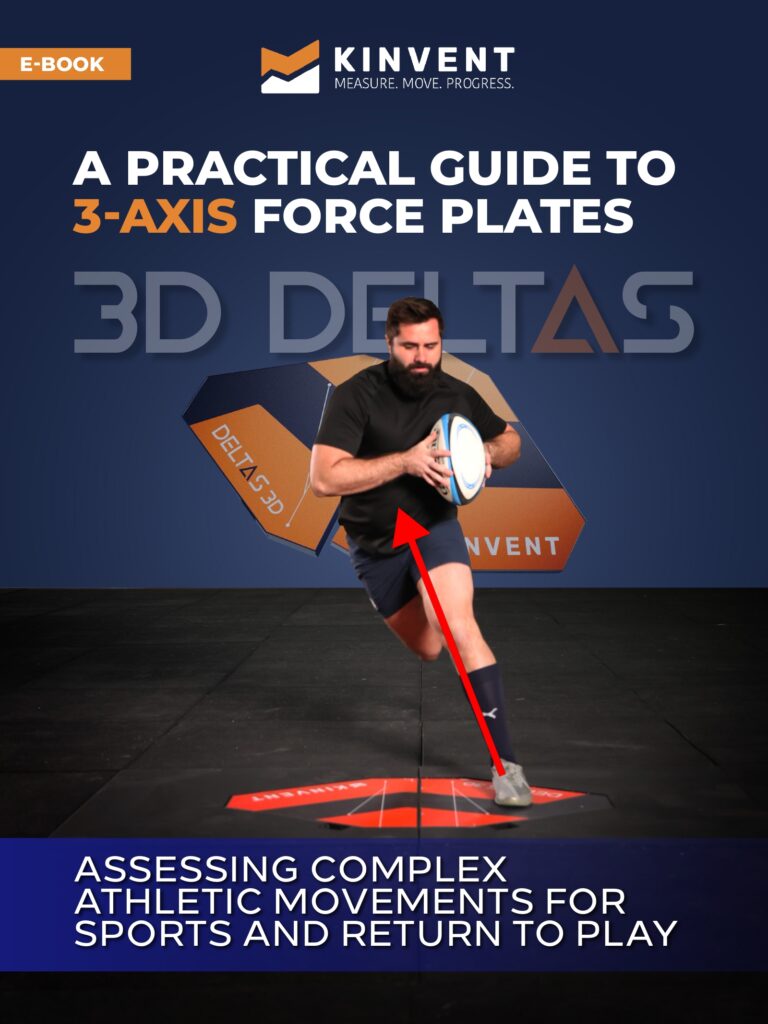Unlocking Athletic Potential: A Practical Guide to 3D Force Plates
In high-performance environments, from elite sports to advanced rehab, movement analysis is everything. Unlike traditional force plates, which only measure vertical force, 3D force plates capture forces across three axes: vertical (Z), anterior-posterior (Y), and medial-lateral (X). This multidimensional view allows professionals to see what single-axis tools miss, the how and why behind movement inefficiencies, asymmetries, and performance variations.
Why does going beyond 1D or 2D matter?
Because athletic movement is never one-dimensional. Jumps, changes of direction, rotations, every action involves a complex interaction of forces. 3D analysis lets you understand not just how much force an athlete produces, but how they produce it, and where imbalances or risks truly lie.
This ebook, “A Practical Guide to 3D Force Plates,” demystifies this gold-standard technology and shows how Ground Reaction Forces (GRF) data can enhance performance, guide recovery, and optimize training across major sports such as basketball, baseball, American football, and track & field.
Download your free guide and take your athlete assessment to the next dimension.
What You’ll Learn in This Ebook
🔬 The Power of 3D Technology
Understand the difference between 1D and 3D force plates. Learn how the 3-axis system captures ground reaction forces (GRF), calculates moments (rotational forces), and provides data corresponding to the sagittal, frontal, and transverse planes of motion.
🏃 Change of Direction (COD) Testing & Biomechanics
Discover the importance of Change of Direction (COD) testing in sports like soccer. Learn how integrating 3D force data with motion capture helps visualize force vectors, identify biomechanical weaknesses, and reduce injury risk, particularly for structures like the ACL.
🏀 Sport-Specific Assessments
See practical applications of the 3-axis force plate across key sports: basketball (lateral CMJ), baseball (rotational swing mechanics), track & field (force symmetry during take-off and landing), and American football (power and stability during lateral acceleration).
📈 Key Metrics for Athlete Assessment
Familiarize yourself with crucial sports biomechanics metrics derived from 3D data, including Rate of Force Development (RFD), Peak Force, Power, Impulse, and Asymmetry Indices. These metrics enable customized interventions and precise progress tracking.
Why Download This Ebook?
This guide is indispensable for performance specialists and clinicians focused on athlete assessment:
✅ Gain Diagnostic Depth: Transition from 1D to objective 3D force analysis for complex athletic movements.
✅ Reduce Injury Risk: Use GRF, torque, and asymmetry data to identify and correct vulnerabilities before injury occurs.
✅ Optimize Training: Apply sport-specific metrics (e.g., Lateral Impulse, CoP shifts) to maximize performance and safely guide return to play (RTP) protocols.
Download your free copy of “A Practical Guide to 3-Axis Force Plates” now and leverage the power of sports biomechanics for superior results.
Want to Learn More?
About 3D DELTAS
The 3D DELTAS force plate system is designed to measure forces and moments along all 3 axes. This allows for the gold-standard analysis of complex movements like change of direction (COD) testing and rotational maneuvers. Its robust design and portability enable data collection in real-world settings, making it the superior choice for comprehensive sports biomechanics assessments.
About Kinvent
Kinvent supports sports and health professionals in assessing, motivating, and tracking progress across over 70 countries. Our connected ecosystem provides the objective, precision-based data needed to transform every evaluation into a measurable step toward better performance. Kinvent empowers clinicians to move beyond intuition and elevate their athlete assessment through data-driven precision.
